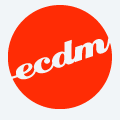Companies are finding online games a valuable addition to the marketing mix and getting them right appeals to your customer’s playful side and has been shown to have a number of tangible benefits. Popular games spread awareness of your brand or product, and games can include a company message. Keeping ‘hi-scores’ not only increases a game’s popularity but allows you to build a database of leads. Successful games are infectious, they make you want to play it over and over again and can then be sent to friends as a viral campaign.
To make a successful viral game follow our simple tips:
- Ensure that it is fun! People won’t play or spread the word if it is not a fun game.
- Send out an appealing EDM (electronic direct mail) as an invitation to play.
- Make access as easy as you can. Don’t over-complicate the rules or make people register before they play.
- Keep the message simple.
- Use the game as a possible new business tool.
- People are there to play the game so their concentration will be focused on the game and not on some complicated sales message.
- Incentivise responses. Make the user have a chance to win something of value.
- Make sure you collect the data, analyse it and put it to good use.
- Build a complementary microsite, with a unique web address.
- Remember to exclude family and friends from winning any prizes.
- Finally, make sure the game is noticed in the first place, leverage social media and email the game to everyone in your database (called seeding) and ask all of your employees to do the same. You may even want to invest in a mailing list.
